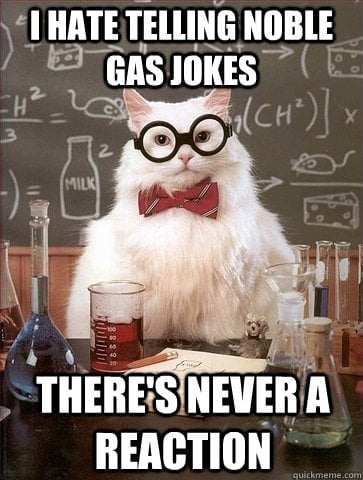Table of Contents (click to expand)
The World Anti-Doping Agency (WADA) has banned Xenon and Argon because they are Performance Enhancing Drugs (PEDs) that positively affect an athlete’s performance in a sport. Noble gases Xenon and Argon are added to WADA’s list of Prohibited Substances and Methods because they are bioactive and increase the oxygen-carrying capacity of human blood. Inhalation of Xenon or Argon could boost an athlete’s stamina and energy, thereby giving them an unfair advantage over other competing athletes.
Back in 2014, Xenon and Argon became the latest additions to the list of chemicals and supplements banned by the World Anti-Doping Agency (WADA) – an entity that runs drug testing across many sporting events. The decision was seen as an unusual one, as people thought that the idea of doping with gases that were commonly associated with neon light, arc welding, and anesthesia was a little weird.
However, the ban was actually enforced, as noble gases Xenon and Argon were added to WADA’s list of Prohibited Substances and Methods.

We do know that Performance Enhancing Drugs positively affect an athlete’s performance in a sport (we have discussed PEDs in this article). But how do noble gases like Xenon and Argon boost a player’s performance? What do these so-called noble gases do to athletes that has made the WADA ban them from the theater of sports?
Before we get to that, we need to first discuss noble gases in general.
Recommended Video for you:
What Are Noble Gases?
The chemical elements of the 18th group of the periodic table are known as noble gases. These elements are all gases, including helium (He), neon (Ne), argon (Ar), krypton (Kr), xenon (Xe), radon (Rn), and oganesson (Og).

The reason they are called ‘noble gases’ is that they are truly noble. In less cryptic terms, it implies their unusual non-reactivity. To be more scientifically specific, noble gases have filled outer electron shells, which makes them quite less inclined to the idea of reacting with other elements at normal pressures and temperatures. This is why they very rarely form compounds with other elements.
It’s interesting to note that when the members of the 18th group were first discovered, they were believed to be awfully rare, as well as chemically inert. That’s why they have also been called ‘rare’ or ‘inert’ gases.

Biological Effects Of Noble Gases
Some noble gases are well known to be biologically active due to their analgesic, sedative and hypnotic properties. This, in addition to the fact that they are mostly inert under normal pressure and temperature conditions, makes noble gases quite useful in many situations/settings.
For instance, common inhalation anesthetics are known to have certain disadvantages, including decreased cardiac output, toxicity etc. In contrast, xenon (a noble gas) also has anesthetic properties, minus the aforementioned disadvantages.
Why Are Xenon And Argon Banned In Sports?
Being amazingly bioactive, Xenon is found to marginally increase the oxygen-carrying capacity of human blood. The same is true for Argon.
You might already know that our cells need to maintain proper oxygen levels to maintain their aerobic metabolism and energy generation. Xenon and Argon help in the latter in a very smart way (Source).
Xenon is one of the few agents that are known for their ability to activate the production of HIF-1α, which triggers other proteins to rush to the rescue of oxygen-deprived tissues. One of those proteins is erythropoietin (EPO), which is basically a hormone that boosts the formation of red blood cells in the bone marrow.

What it really does is stimulates low-level hypoxia (a condition wherein there is a deficiency in the amount of oxygen reaching the tissues). This, in turn, stimulates the body to produce blood so that it does a better job of taking in oxygen. If I have to say the same thing in technical terms, I’d say that the inhalation of xenon increases erythropoietin (EPO) levels, a hormone that increases the oxygen-carrying capacity of the blood by encouraging the formation of red blood cells. It should be noted that, due to the same characteristic, synthetic EPO is used to treat patients with kidney diseases and anemia.
Thus, inhaling Xenon or Argon could boost your stamina and energy, thereby giving you an unfair advantage over other competing athletes. In addition to that, another major advantage that these noble gases offer is that they ‘clear out’ from the body within hours, but their performance-enhancing effects can last for days.
References (click to expand)
- Stoppe, C., Ney, J., Brenke, M., Goetzenich, A., Emontzpohl, C., Schälte, G., … Coburn, M. (2016, March 3). Sub-anesthetic Xenon Increases Erythropoietin Levels in Humans: A Randomized Controlled Trial. Sports Medicine. Springer Science and Business Media LLC.
- Should stamina-boosting gases be banned? - Massey University - www.massey.ac.nz
- Hughes, D. (2015, October 1). The World Anti-Doping Code in sport: Update for 2015. Australian Prescriber. NPS MedicineWise.
- sports doping control: Topics by Science.gov. Science.gov
- Růžička, J., Beneš, J., Bolek, L., & Markvartová, V. (2007). Biological effects of noble gases. Physiological Research. Institute of Physiology of the Czech Academy of Sciences.
- Smit, K. F., Weber, N. C., Hollmann, M. W., & Preckel, B. (2015, January 12). Noble gases as cardioprotectants - translatability and mechanism. British Journal of Pharmacology. Wiley.
- Masoud, G. N., & Li, W. (2015, September). HIF-1α pathway: role, regulation and intervention for cancer therapy. Acta Pharmaceutica Sinica B. Elsevier BV.













